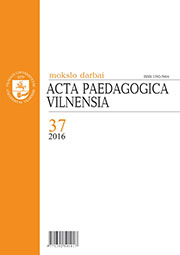The PISA Phenomenon: The Many Faces of International Student Assessment
The PISA Phenomenon: The Many Faces of International Student Assessment
Author(s): Rimantas ŽelvysSubject(s): School education, State/Government and Education, Methodology and research technology, Transformation Period (1990 - 2010)
Published by: Vilniaus Universiteto Leidykla
Keywords: Programme for International Student Assessment (PISA); globalization; neoliberal ideology; benchmarking; league table; policymaking;
Summary/Abstract: The aim of this article is to explore the phenomenon of PISA – the Program for International Student Assessment. The PISA study is a unique initiative in the contemporary educational world. Initiated in 2000 by OECD, currently it includes 65 countries and territories from all over the world. We decided to identify the multiple aspects, or, speaking metaphorically, the many faces of PISA, which carry different messages and are subject to different value judgments by various interest groups. In our publication, we discuss ten different aspects of PISA. PISA can be perceived as a symbol of globalization, as a manifestation of neoliberal ideology in education, as a methodological controversy, as a research database, a benchmark, a league table, as promotion, as punishment, as business, and, finally, as policymaking. We conclude that the key actors of an educational domain should use various aspects of PISA survey in a more skillful and selective way for achieving their goals and securing their interests.
Journal: Acta Paedagogica Vilnensia
- Issue Year: 2016
- Issue No: 37
- Page Range: 9-17
- Page Count: 9
- Language: English

